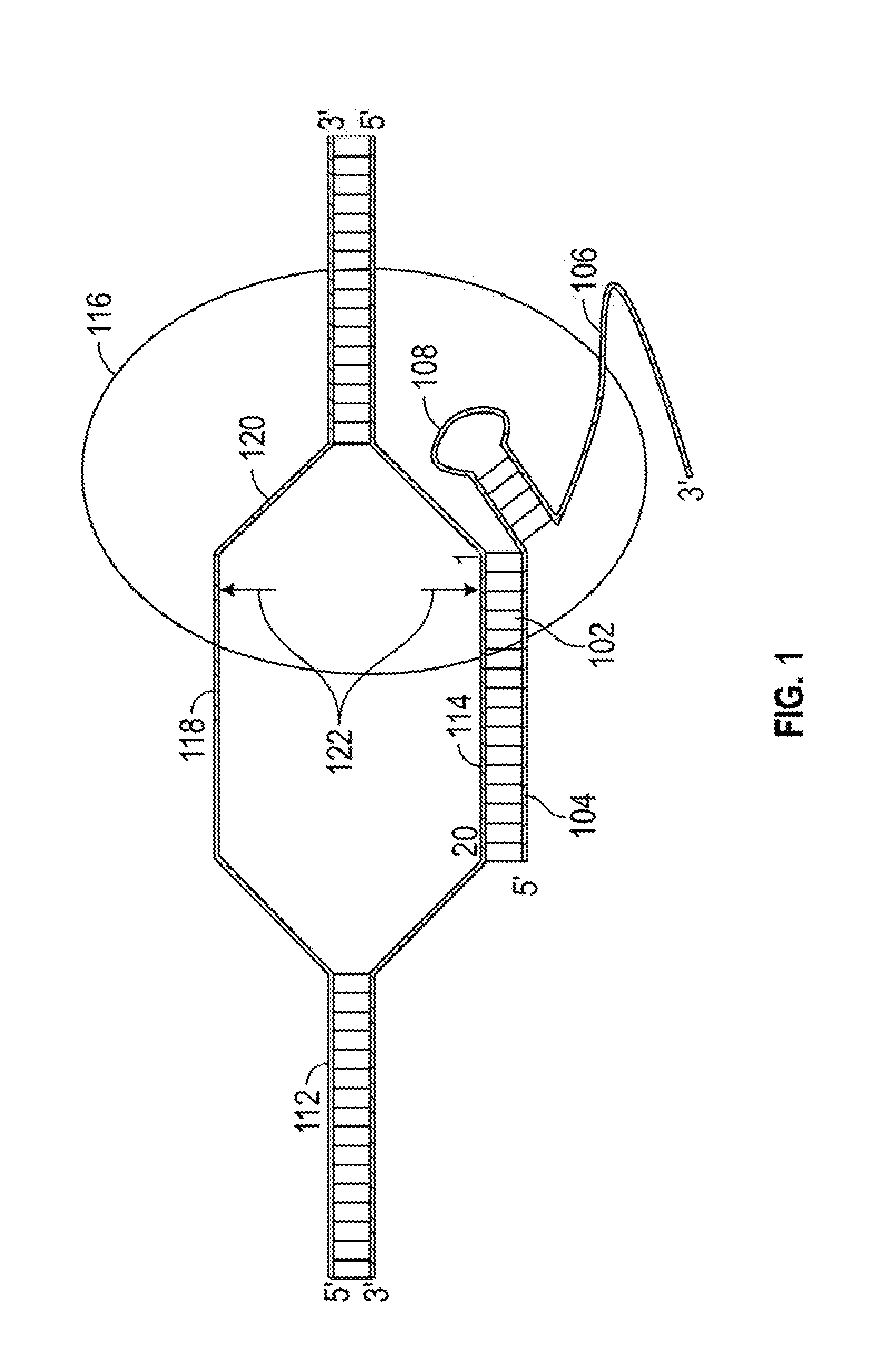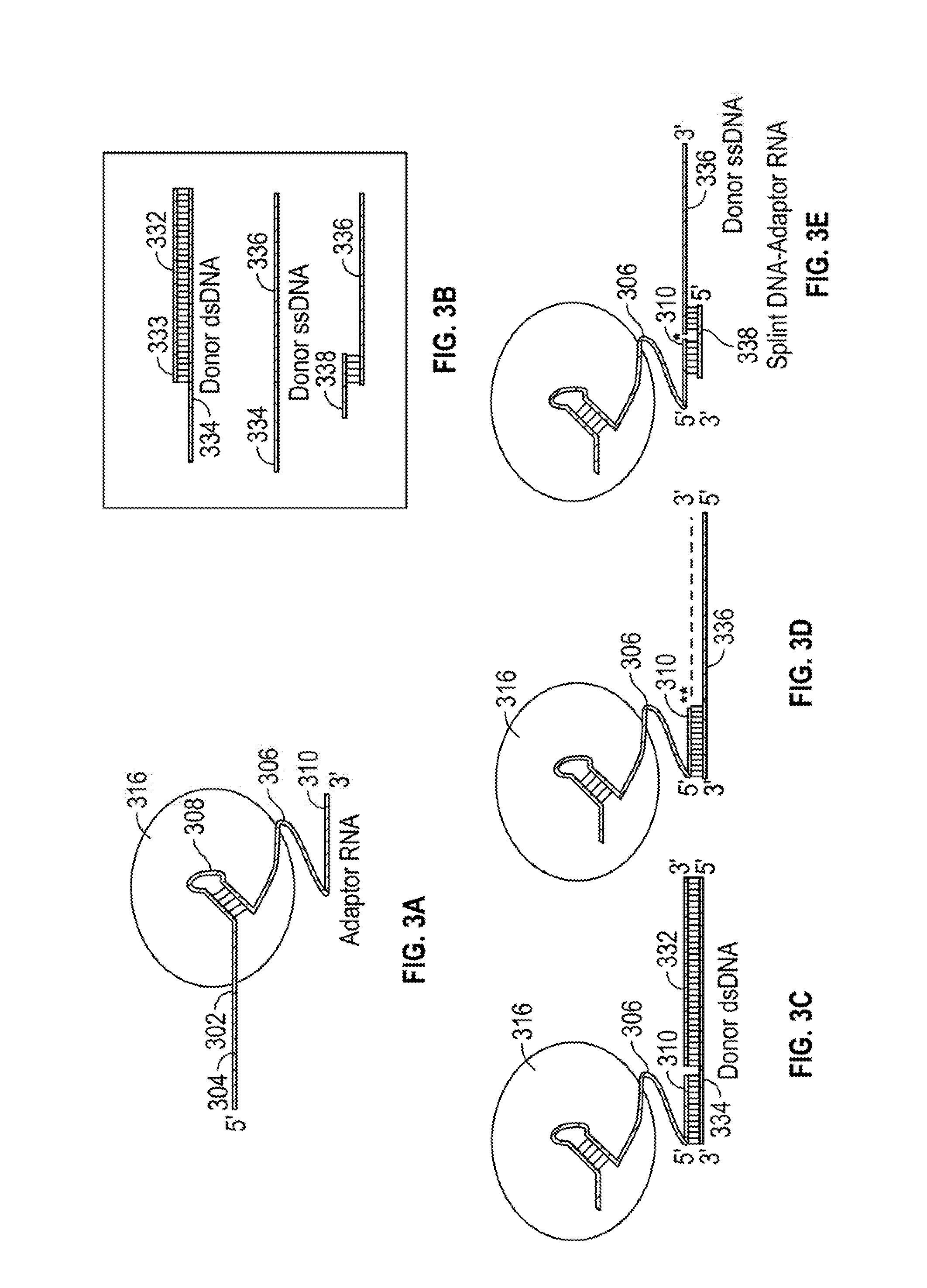Compounds and methods for crispr/cas-based genome editing by homologous recombination
a genome editing and genome technology, applied in the field of molecular biology, can solve the problems of low frequency with which hr occurs at the dsb, inherently error-prone non-homologous end-joining process, and constrained target genomic sequence landscap
- Summary
- Abstract
- Description
- Claims
- Application Information
AI Technical Summary
Benefits of technology
Problems solved by technology
Method used
Image
Examples
Embodiment Construction
[0017]This invention relates to compounds and methods for modifying a target polynucleotide by homologous recombination using a Cas protein:guide RNA system. The present disclosure provides guide RNAs comprising adaptor segments for attaching donor polynucleotides, other adaptors, or splint segments. In certain embodiments, modifications to the adaptor segment increase the stability of the adaptor:donor polynucleotide complex; and do not substantially compromise the efficacy of Cas:gRNA binding to, nicking of, and / or cleavage of the target polynucleotide. In certain embodiments, a dual Cas:gRNA system is used in which a first guide RNA directs a Cas protein to make a double-strand break at a first target sequence, and a second guide RNA comprises an adaptor segment tethered to a donor polynucleotide. The second guide RNA binds a second target sequence that is offset from the first target sequence.
I. Definitions
[0018]As used herein, the term “guide RNA” generally refers to an RNA mol...
PUM
| Property | Measurement | Unit |
|---|---|---|
| stability | aaaaa | aaaaa |
| resistance | aaaaa | aaaaa |
| constant length | aaaaa | aaaaa |
Abstract
Description
Claims
Application Information
 Login to View More
Login to View More - R&D
- Intellectual Property
- Life Sciences
- Materials
- Tech Scout
- Unparalleled Data Quality
- Higher Quality Content
- 60% Fewer Hallucinations
Browse by: Latest US Patents, China's latest patents, Technical Efficacy Thesaurus, Application Domain, Technology Topic, Popular Technical Reports.
© 2025 PatSnap. All rights reserved.Legal|Privacy policy|Modern Slavery Act Transparency Statement|Sitemap|About US| Contact US: help@patsnap.com



